HOLLEBEKE, BELGIUM
Throughout France and Belgium there are many memorials to the Australian and New Zealand soldiers - Anzacs - who fought and died there in World War I. These sites have become sacred places not only to the descendents and friends of the fallen but to many others who honour their sacrifice.
This webpage highlights one of these sacred sites. Hollebeke is a Flemish village in the Belgian province of West Vlaanderen, now part of Ypres city. In March 1918 the German "Spring Offensive" was fought out in places such as Hollebeke where thousands of soldiers died. The photos below have been supplied by Margaret Cooper Smith - the great niece of Lewis Spratt AIF who was gassed at Holebeke in March 1918 and died soon after. She visited a number of these sites and her photos appear on the linked pages (see below).
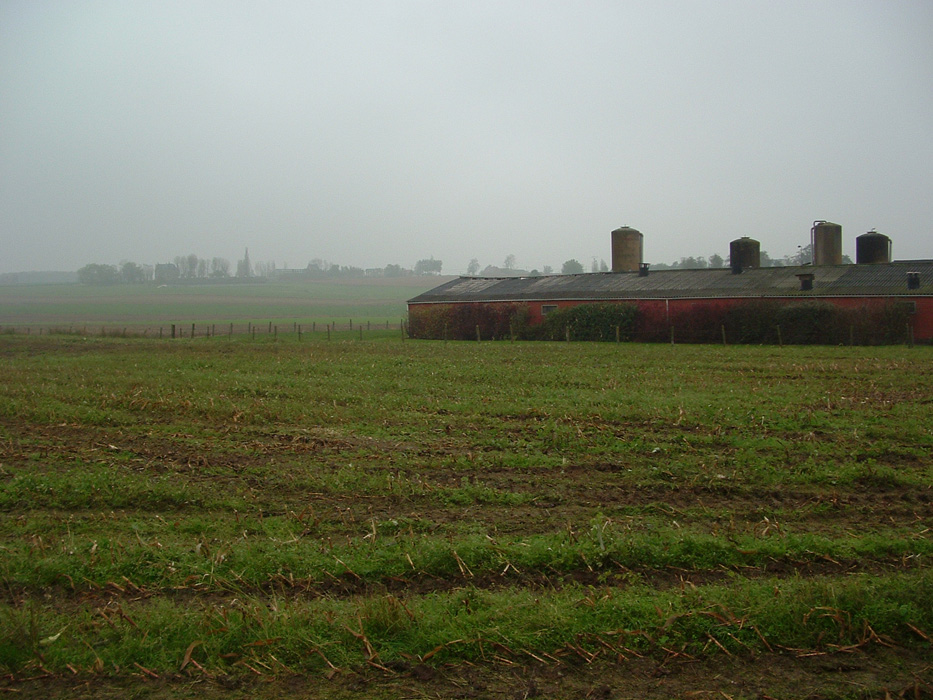 |
A farm on the outskirts of Hollebeke near where the Australian 3rd Brigade suffered heavy casualties in March 1918. |
BACKGROUND
In February 1918 the Australian 3rd Brigade were training at Neuve Eglise, Belgium, and relieved the 4th Brigade at the front line on the 1st of March, in preparation for what was to become the German "Spring Offensive". By the 3rd of March 1918 all four Battalions (9th, 10th, 11th and 12th) of the 3rd Brigade were at Hollebeke, Belgium. Much work was needed in defensive works on the British front line: trenches drained and repaired, wiring dug in and so on. The 9th Battalion was sent to the "Left Front Line" a few hundred metres north of the railway line and canal.
On Tuesday 5th March, at about 6pm, the left Front Line at Fusilier Walk was hit with trench mortar gas bombs launched by the Germans. The gas - mostly "Yellow Cross" (mustard gas) and "Green Cross" (chloropicrin) with some phosgene and "Blue Cross" (diphenyl chlorarsine) thrown in - filled the trenches and the surrounding valley. This bombing and gassing was severe for 3 hours and traces of the gas remained all night. Battalion Headquarters and "D" Coy at Fusiliers Walk had suffered heavily. HQ shifted to a deep tunnel in Railway Trench and "D" Coy 9th Bn was relieved by "D" Coy 11th Bn. This map below shows the area gassed.
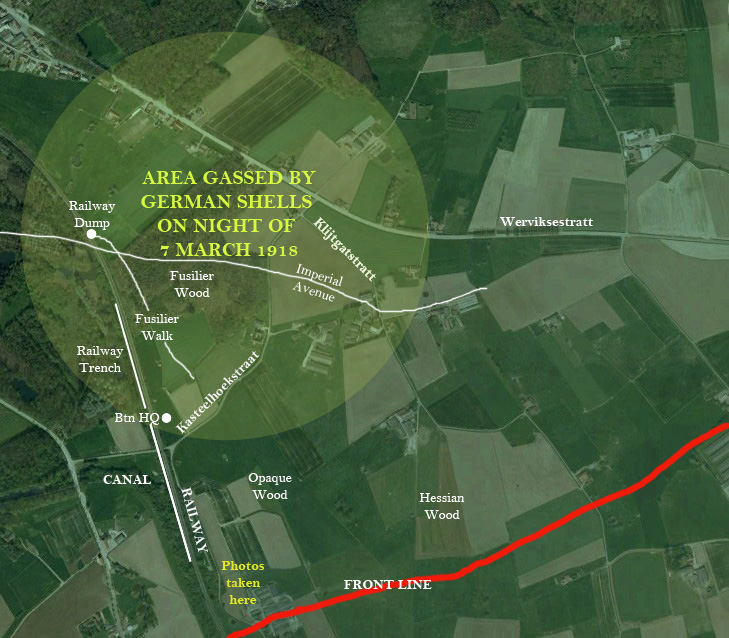 |
The area showing where the German gas shoot occured on 5th March. The most shelled area was between Fusilier Walk and 9th Battalion HQ. The gas spread out from this area and settled in the lower parts of the valley (beside the canal). "D" Company 9th Battalion were on the left side of the front line near the railway. This is where Margaret took the photos as marked on the image above. Railway Trench and Imperial Avenue were heavily targeted by the enemy with High Explosive shells from 7.20am to 4.30pm beforehand. Source: Brigade War Diary, Battalion War Diary and Daily Shell Register, 5-7 March 1918. |
The next morning (Wednesday 6th March) the men started to report in ill with gas poisoning. The War Diary for the 6th reports "Large number of gas casualties reported by the Left 9th Battalion in the early morning". Lewis Spratt, like the other gassing victims, was suffering dry throat, a husky voice and a hacking cough. The relentless coughing was a security risk as the Germans could hear the men coughing all night and target their positions.
Major Leonard May of the 11th Battalion, who had seen the same symptoms during the German gassing earlier in the war, recommended that the men not be evacuated owing to the high numbers involved. He said they were not bad enough to warrant evacuation as they were in good health otherwise: they were fed well, well looked after, and had good sanitation with almost no diarrhoea. Nevertheless, the gassing victims all became short winded, with fits of coughing. They had been on the front line for a long time and were exhausted and getting worse. On Thursday 7th March 10 officers and 150 Other Ranks were evacuated. This included Lewis Spratt who was taken to the 53rd General Hospital at Wimereux - near Bolougne, France, about 135 km by road east of Hollebeke. Gassed and evacuated at the same time were their officers Lt Col Leslie Mullens DSO, Lt Thomas William Farmer, Lt Sidney Henry Russell, Lt Bertram Nicholls, Lt Ernest Henry Meyers, Lt Joseph Hutcheson Bryson, Lt Walter Carlyle Henzell and Lt Claude James Warneminde. More men were evacuated on the 8th and 9th - also as a result of the asphyxiant gassing.
On the 9th March, the 9th Bn was relieved by the 11th Bn and had evacuated back to Tournai Camp by 9pm. The 3rd Brigade was relieved by the British on 3rd April.
Of those mentioned as being gassed (above), Lt Warneminde died on 13 March, Pte Spratt died on 15 March, and Lt Bryson on 16th March - all from complications of the gassing. The others recovered although Lt Russell was killed in action on 20th July.
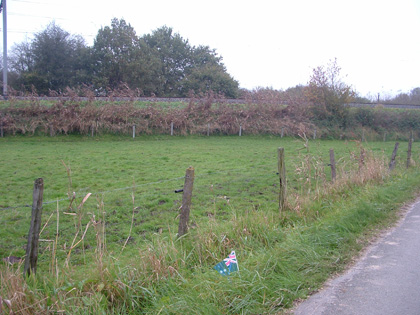 |
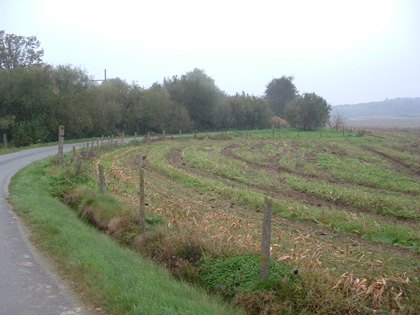 |
An Australian flag was planted by Margaret Cooper Smith in 2008 to mark the spot where her great uncle Lewis Spratt was wounded by a German gas barrage in March 1918. You can see the railway embankment and the canal vegetation behind it. |
The farm opposite where the flag was planted. "D" Coy of the 9th Bn were entrenched here from 5-7 March 1918. Battalion HQ was on the left about 500m further on. After the gassing HQ was shifted to a tunnel in the rail embankment. |
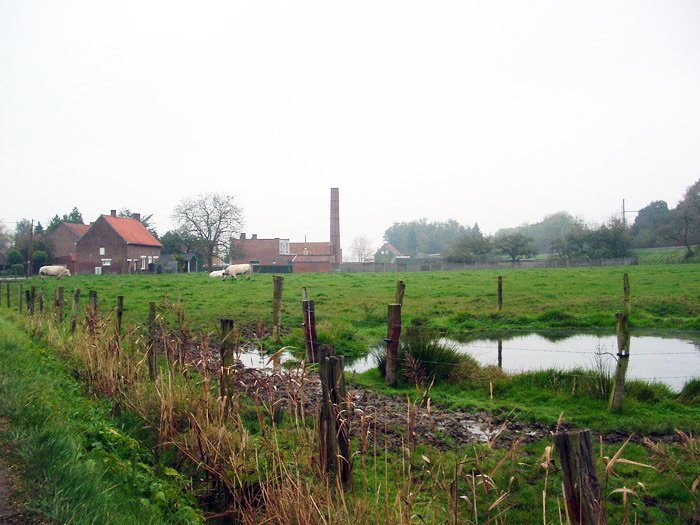 |
From the roadside you can see the brickworks next to the railway line. The pond continues in the image below. |
 |
Looking south at the rail embankment and canal behind it. The front line ran through here. The village of Hollebeke is a further 500m behind the railway line. This is a low-lying area and any enemy gas would settle in the valley here and take days to disperse (hence the need for evacuation). |
 |
 |
Hollebeke farmhouse a little further south. The British front line ran right across this area in March 1918. |
Sheep peacefully grazing on one of the most contested areas of WW1 - the front line of Hollebeke. |
 |
If you have any feedback please email me: Dr Richard Walding Research Fellow Griffith University, Brisbane, Australia Email: waldingr49@gmail.com |
Return to: Manly War Memorial, Yeronga War Memorial, Granville War Memorial
